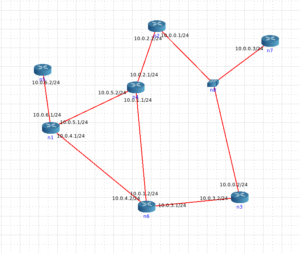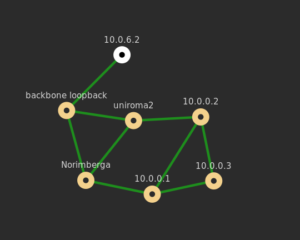Hello again, since last updates I worked hard to finish my project and to reach the final milestone for this project.
As I explained in my previous post[1], due to some issues, we’ve decided to change the topic of the project to Implementing Pop-Routing in OLSRd instead of OSPF.
In this last month I completed the code for the OLSRd plugin[2], which I hope will be merged soon [3].In order to allow PRINCE to interact with OLSRd I had to modify the PRINCE source code[4] and create a new plugin[5].
The last part of my GSOC was testing the functionalities of my project.
To perform this tests I used a tool developed by the University of Trento, called “NePA TesT”[6]. NePA allowed me to simulate a mesh network in my laptop and to perform tests on it. The network topology was defined using NetJSON, but for my purpose modified it to use graph generators[7]
To ensure that PRINCE was working correctly on this virtual network I measured the centrality and the tuned timer for each node. Then I compared these values to the ones calculated by the original algorithm. Since the simulated network was real, and it needed a bit of time to converge, I took the last 10 values to avoid to measure errors. This are the maximum errors for each size and each kind of graph:
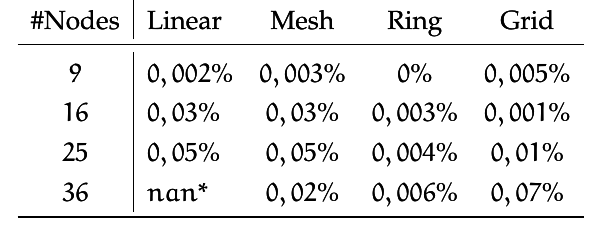
I also measured the “hello” messages’ rate to check if it was being calculated correctly by PRINCE. As I did for the centrality I took the mean of the last 10 values for each node and I compared them against the ones calculated using the python Pop-Routing algorithm.
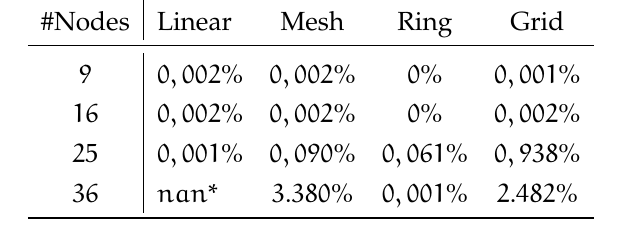
Hence, as we can see from these tables, PRINCE is calculating the Centrality, and the timer’s value, with a really small error. This test also highlighted a bug (*) in the c_graph_parser library with very that particular kind of graph [8].
The last test I performed was to check whether the message to update the timers’ emission rate was actually modifying the emission rate of the messages.
I used a simple graph: 2 nodes connected by one link. And I captured the traffic with tcpdump, before and after the update message.
After 30 seconds I sent a message to the OLSRd poprouting plugin to update the hello timer to 5s. As you can see from the graph below it is working correctly!
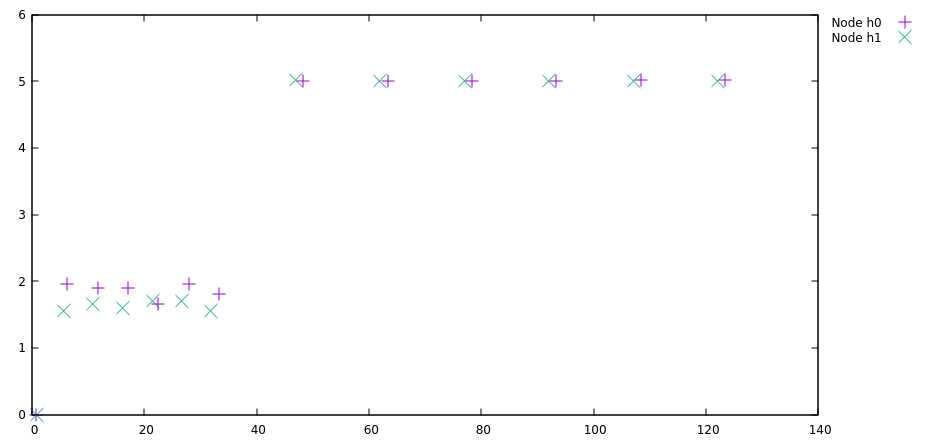
I can conclude that PRINCE is working correctly with OLSRd and now it can be used to enhance the Wireless Community Networks that are still using it.
I would like to thank Freifunk, Ninux and Google for giving me the opportunity to participate in GSoC.
Cheers, Gabriele Gemmi
[1]: https://blog.freifunk.net/2017/07/27/implementing-pop-routing-ospf-july-updates/
[2]: https://github.com/AdvancedNetworkingSystems/olsrd/tree/poprouting
[3]: https://github.com/OLSR/olsrd/pull/38
[4]: https://github.com/AdvancedNetworkingSystems/poprouting/tree/refactor_ospf
[5]: https://github.com/AdvancedNetworkingSystems/poprouting/tree/refactor_ospf/prince/lib/olsrd
[6]: https://ans.disi.unitn.it/redmine/projects/community-newtork-emulator/wiki
[7]: https://github.com/AdvancedNetworkingSystems/wcn_emulator
[8]: https://github.com/AdvancedNetworkingSystems/poprouting/issues/23

